How to Clean, Prep, and Cook Mushrooms Perfectly
Mushrooms may seem simple, but they're more complicated to cook with than they appear. I learned this the hard way through years of trying and failing to successfully make mushroom recipes. For a long time, it seemed like no matter what I did, they'd turn out slimy or they'd never brown the way I wanted them to.
Over time I learned that mushrooms have a totally different set of needs than other produce. You can't wash them like you would a cucumber or a tomato, and you definitely can't cook them the same way either. But if you know what makes them tick, you can easily achieve perfectly cooked mushrooms in no time at all.
Here you'll find everything I learned about cooking mushrooms from years of trial and error, plus tips from a couple of cooking experts.
First, let's talk about the (many) different kinds of mushrooms.
"From the incredible wild truffles and chanterelles of the northwest to the morels of the northern midwest, it's important to remember that there are hundreds of edible mushrooms out there," Will Horowitz, chef and author of the forthcoming cookbook Salt Smoke Time, tells SELF. He says that there are over 5 million species of fungi just that we know about, but that button, crimini, shiitake, oyster, portobello, and maitake mushrooms are the types that you're most likely to see at the supermarket.
Because there are so many different kinds of mushrooms out there, Horowitz says there isn't just one right way to cook them. "Some taste like acorns, some like olives, some beefy, and there are even some that famously taste like shrimp," he explains. "Some are best pickled, others lightly steamed, and others grilled." Don't be afraid to taste your mushrooms before you start cooking, and don't be afraid to get a bit experimental when you do.
Before use, refrigerate mushrooms in a loose brown paper bag or cardboard box. Avoid plastic wrap at all costs.
"It's important to make sure mushrooms are stored well before even cooking," says Horowitz. They need to be able to breathe, otherwise they run the risk of becoming soggy or prematurely moldy. So, he recommends avoiding plastic wrap and storing them inside brown paper bags or small cardboard boxes whenever possible.
To clean mushrooms, simply wipe the dirt off. Never, ever, ever rinse them under water.
Because mushrooms have a high water content and are very absorptive, rinsing them can cause them to become waterlogged and result in a slimy, flavorless final product, David Burke, executive chef at David Burke Tavern in New York City, tells SELF. Instead, he recommends using a soft paint brush to gently brush away any visible dirt. If you don't have a paint brush or you'd rather not mix up your art and cooking supplies, I find that using a damp washcloth to wipe them clean works just fine.
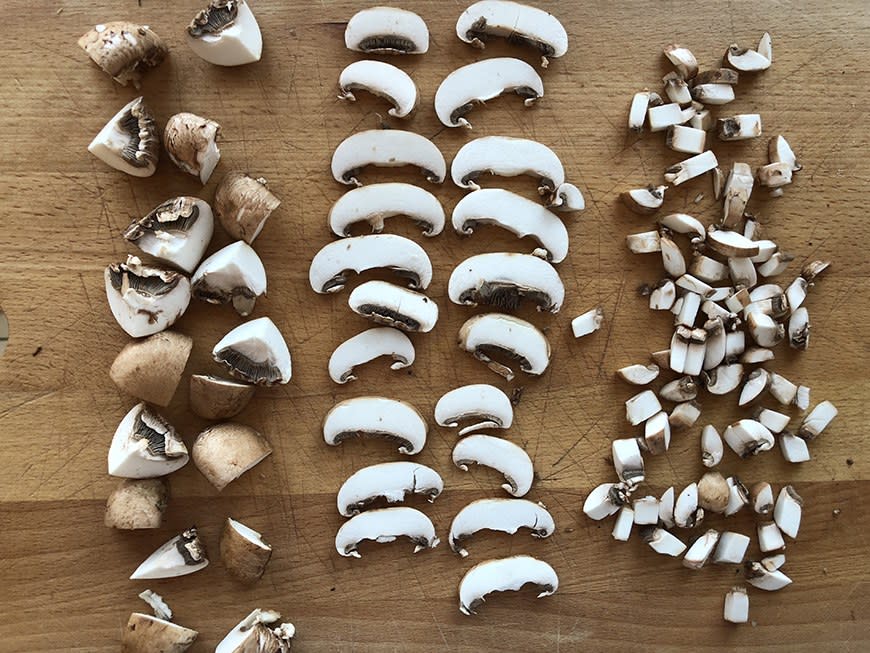
Slicing, dicing, and quartering are the most common ways to prep mushrooms, though you can also cook them whole.
To determine how you should cut your mushrooms, take into consideration what will work best in the recipe you're making. If you're whipping up a salad, sliced or quartered mushrooms both work well. If you're making a soup, you'll want to dice them into small even bits so you get the same amount of mushroom in every bite. If you're going to grill them, consider leaving them whole (this method works especially well with big, juicy portobellos). You can also grind them up to make vegetarian meatballs—they have an uncanny meatlike texture. At the end of the day, it all comes down to your preference.
And don't throw away those stems!
When it comes to mushrooms with delicate stems, like crimini or button, Horowitz says that you can actually slice up the stems and add them to your food the same way you would with the caps. For mushrooms with woodier stems, like shiitake, he recommends saving them to make a homemade mushroom stock. Burke also likes to dry them and grind them to use in tea.
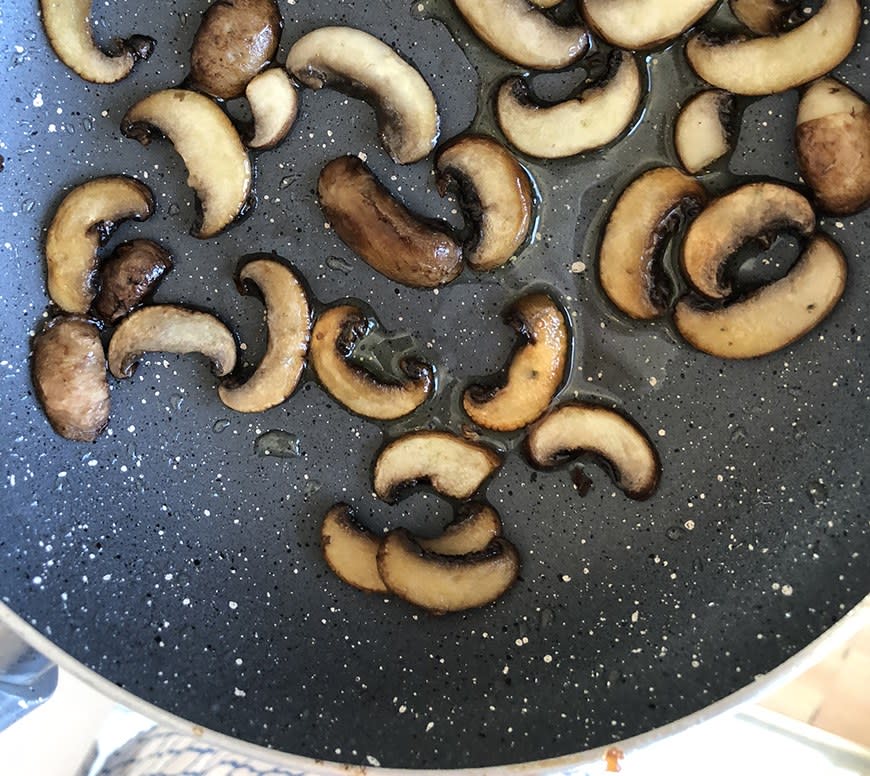
To ensure they brown properly, always cook mushrooms in a fat source at a high heat—and make sure they're completely dry before you start.
Whether you're cooking mushrooms in the oven, on the grill, or on a stovetop, cook them in a fat like butter or olive oil over high heat to cook off excess moisture and guarantee a proper sear. "Mushrooms are 92 percent water," Burke explains, "so it's important to sear them on a high heat and evaporate all that water so you can develop texture through caramelization." Use about a tablespoon of your fat source for every 10 ounces of mushrooms.
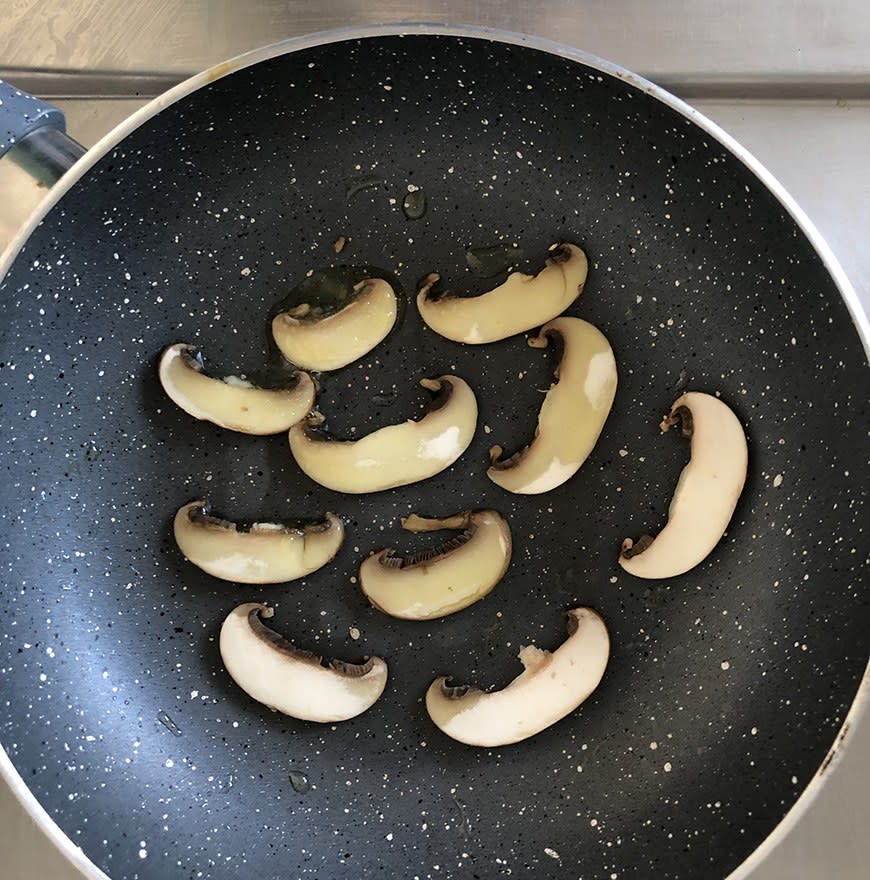
Avoid crowding them together while they cook.
If you put too many mushrooms in a pan at once, Horowitz says that all the moisture they produce will cause them to steam instead of brown. Whether you're roasting or sautéing, leave enough room on the pan for the water to fully evaporate.
Wait to salt mushrooms until after they've started to brown.
Something I've learned over the years from a few experts and have found to be true in my own cooking: Salt draws out moisture, so if you salt mushrooms before they brown, you may end up with more water in the pan. And any extra water can make it harder for the mushrooms to brown. So it's best to wait until they're nearly finished (after a good amount of the water has evaporated first) to add any salt.
To get you started, here are a couple extremely basic ways to cook mushrooms.
For perfect stovetop mushrooms, Horowitz suggests sautéing them sliced with a tablespoon of olive oil and chopped shallots until they're caramelized on all sides. For perfect roasted mushrooms, crank the oven to 425 degrees, coat them in olive oil, and let them cook for 15 minutes.
And here are some recipes that'll help you experiment with them.
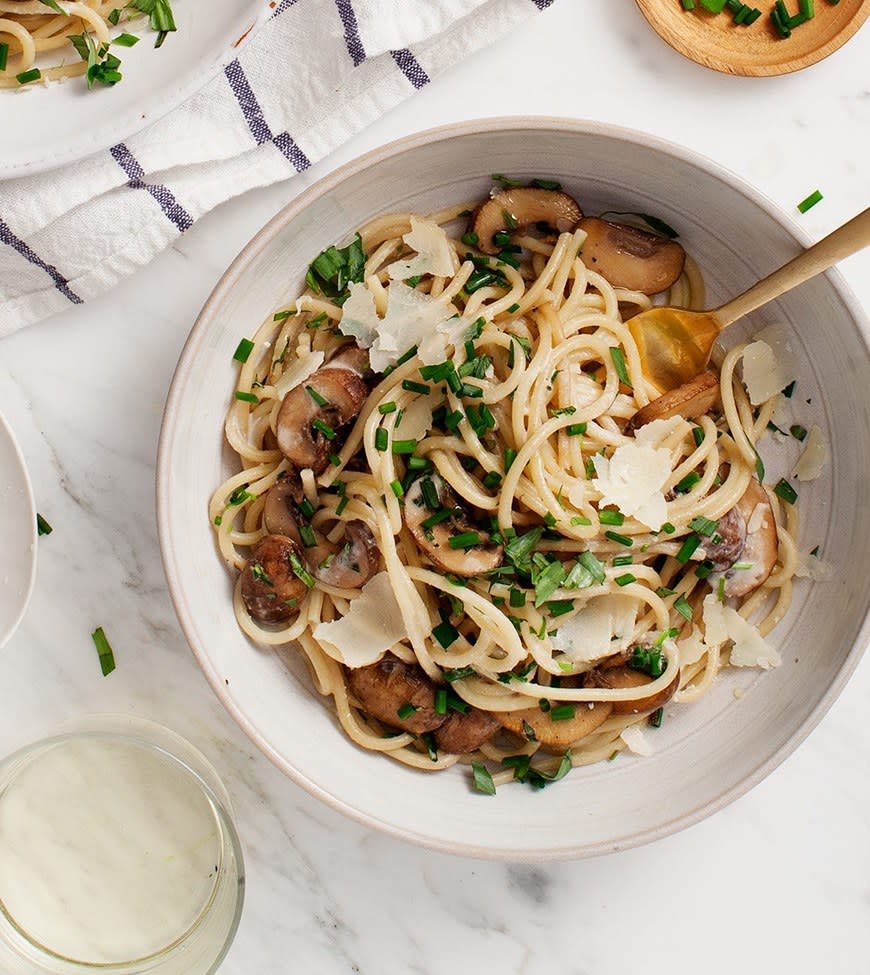
Herb and Mushroom Pasta
Make this pasta when you want to practice your mushroom sautéing skills. Get the recipe here.
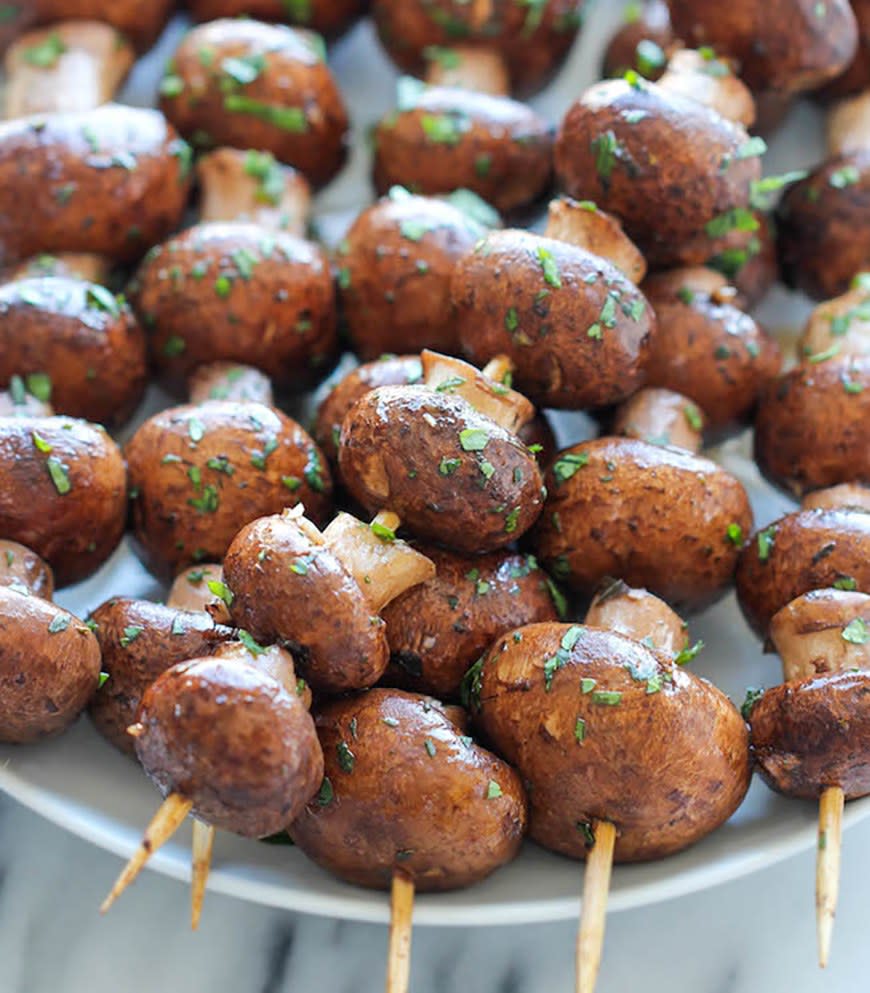
Garlic Mushroom Kabobs
These meat-like skewers are delicious barbecue alternative for vegetarians and vegans. Get the recipe here.
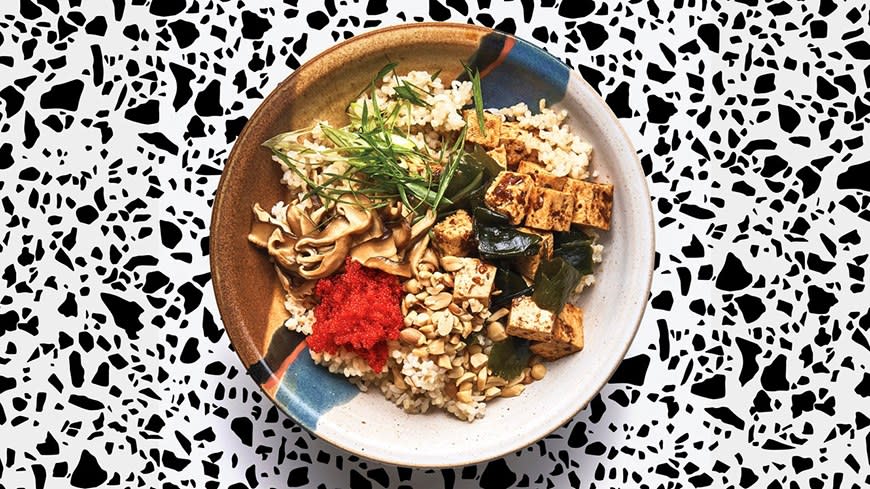
Spicy Tofu With Pickled Shiitake Mushrooms
This pickled mushroom recipe will definitely satisfy those with adventurous tastebuds. Get the recipe here.
